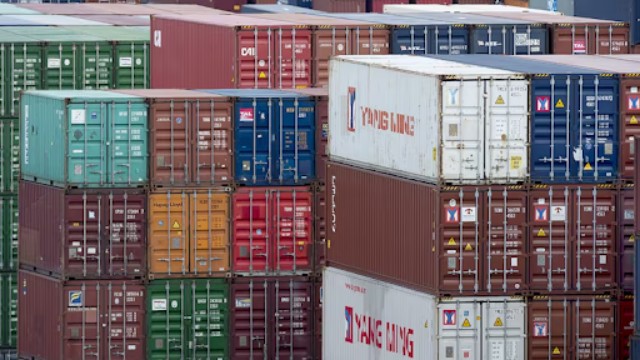
Tesla's robotaxi is displayed at an unveiling event in Los Angeles on Thursday. (Tesla/Reuters)
Tesla's stock dropped sharply following CEO Elon Musk's presentation of a self-driving taxi and robovan at a highly anticipated event. Musk showcased the long-awaited robotaxi on Thursday, featuring gull-wing doors and no steering wheel or pedals. However, the unveiling didn't generate much excitement.
Arriving on stage in the "Cybercab," Musk announced that production is expected to begin in 2026, with a target price under $30,000. He also introduced a robovan capable of carrying up to 20 passengers, though details about the vehicle were scarce.
Musk, known for his ambitious timelines, didn't provide a clear plan for ramping up production or addressing the regulatory challenges that lie ahead. He also didn't elaborate on how Tesla intends to outpace competitors in the autonomous taxi space, like Waymo, which is owned by Alphabet.
After the event, Tesla's stock fell nearly 9% on Friday, reflecting investor skepticism. Analysts and experts have long expressed doubts about how soon fully autonomous taxis will become a reality, particularly given the safety concerns. Current self-driving technology still struggles in situations like poor weather or complicated intersections, leading to incidents involving autonomous vehicles.
During his presentation, Musk claimed autonomous cars could be ten times safer than human-driven ones and could operate five to ten times longer. “The autonomous future is here,” Musk declared, adding that the technology could give people more time by reducing the need for manual driving.
However, some experts remain unconvinced. Krzysztof Czarnecki, a professor at the University of Waterloo specializing in autonomous vehicle safety, believes Tesla’s technology still has a long way to go before it can handle busy city traffic. "There’s a big gap between what was shown and what’s needed for safe operation," Czarnecki said.
Musk had previously hinted at plans for a robotaxi fleet that Tesla owners could share for profit through an app. However, no mention of the app was made during the event. This omission, along with the lack of concrete timelines, disappointed some shareholders.
Running costs for the Cybercab were estimated at 20 cents per mile, with robovans potentially costing as little as five cents per mile. Unlike other robotaxi companies that rely on lidar technology for navigation, Musk emphasized Tesla’s reliance on AI and cameras—an approach that has been criticized for being technically and regulatory challenging.
Experts like Czarnecki have raised concerns about Tesla’s decision to forgo lidar, which uses lasers to create a detailed map of the environment. Tesla’s camera-based system, according to him, can misinterpret shadows as obstacles, leading to unsafe driving behaviors.
While Musk had previously expressed confidence that Tesla would have operational robotaxis by 2020, the timeline has continuously shifted. Despite the flashy unveiling of the Cybercab, some, including Tesla owners, found the event underwhelming due to the lack of short-term developments.
At the event, Musk also highlighted progress with Tesla's humanoid robot, Optimus, which could perform daily tasks in the future. However, Tesla faces broader challenges as sales of its electric vehicles have slowed, and price cuts have affected profit margins. Several companies attempting to break into the robotaxi market have suffered heavy losses, with some even shutting down operations. Meanwhile, Tesla's competitors, like Waymo, are already operating uncrewed robotaxis.
Musk hinted at launching fully autonomous FSD (Full Self-Driving) technology next year in Texas and California. However, it remains unclear whether the Cybercab will use FSD or a new system.















